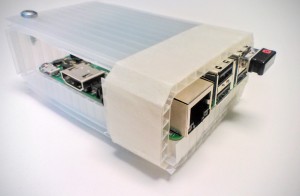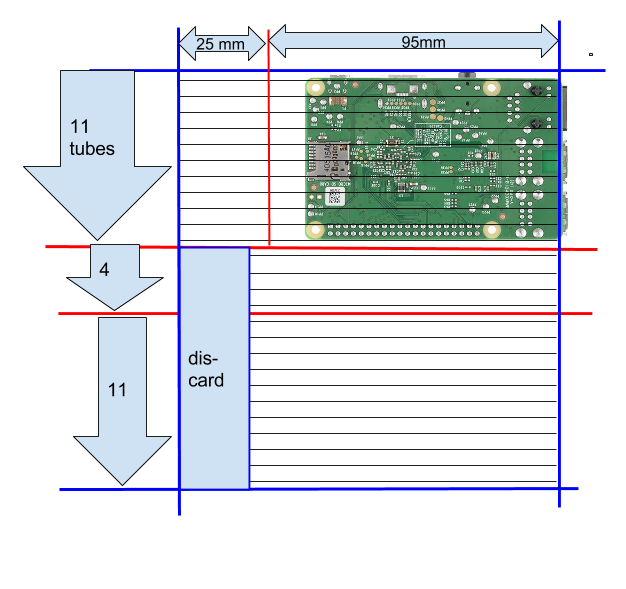You can make a strong, stiff case for your Raspberry Pi or other small computer using Coroplast, a plastic replacement for corrugated cardboard. A cheap retractable utility knife cuts Coroplast to shape, and scores it to make bends. Holes for mounting screws are easily punched through with a point. Coroplast made from polypropylene has a high melting temperature (165 degrees centigrade) so you don’t have to worry about the internal computer melting it as long as there gaps in the sides of the case for ventilation. It is cheap enough to discard a case and try again, or to make a different size when mounting more hardware on another surface.
When laying out a design, plan your long folds along the tubes, and your short folds perpendicular to the tubes. See the diagram below. Commonly available Coroplast is 4mm thick (3/16th of an inch). For strength, fold the Coroplast into shape, rather than taping small pieces. Fold the ends to brace against the sides to prevent the case from collapsing. Mount the Pi using 3/4 inch long round head machine screws, 4/40 threads and nuts (Home Hardware). The screw heads must not exceed 5mm in diameter. Spacers between the Pi and Coroplast, slid onto the screw, can be made from 1/4 inch diameter hose, or even soda straws. When done, tape the case closed. Wedge some short strips of Coroplast between the Pi and the case to prevent shorting components if you miss judge plugging in USBs and HDMI plugs, but leave spaces so air can come and go through the case. See the photo above.
Because you must make cuts in the center of the tubes, the measurements in the diagram are by count of tubes across the tubes and in millimeters along the tubes. Tube spacing varies considerably even in the same sheet. Keep all your cuts on the same side of the Coroplast. When cutting only one side of the Coroplast for a fold, retract the blade so that only 1/8 inch of the point shows, so you don’t cut through to both sides of the Coroplast.
Auxillary boards, displays, switches etc. are mounted inside the case against unused sides.
Here is a layout (not to scale) for a single height case (holds just the Pi.) Blue lines are cuts all the way through, and red lines are cuts on one side only, to make folds.





